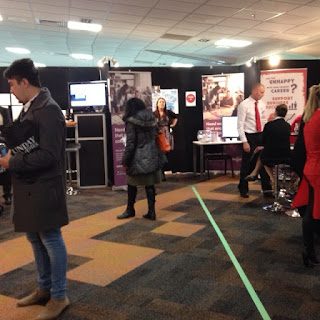Once inside, there were 134 stalls, with plenty of draws and fun games for prizes. A number of the stalls were reflecting changes in the times. One stall, for example, was for a company that offered P testing services; the horrors of homes that have been used for P manufacturing are now making their mark all right. And changes in technology were also manifest; the star of the show at one stall was a robot. Most likely people would forget the stall and what it would sell, but they would remember the robot. The robot was a very popular photo opportunity, as was the Balloon Biz Mickey Mouse balloon sculpture outside the door. You could even get your photo taken with Mickey Mouse.
Some of the businesses I saw included catering, courier, gym, printing, accounting, website design, legal advice, accounting, security, civil defence, gardening, banking, business consulting, HR services, trademark creation, IT, iPhone services, pest control and Payroll. Politics also made its way in; I saw the Upper Hutt City Council and National Party having stalls there. I was a bit surprised at the absence of some businesses, such as travel agents. However, there were some new businesses that looked impressive, such as Just Plants, which can redesign your work spaces to make them more green and healthy with plant decor.









